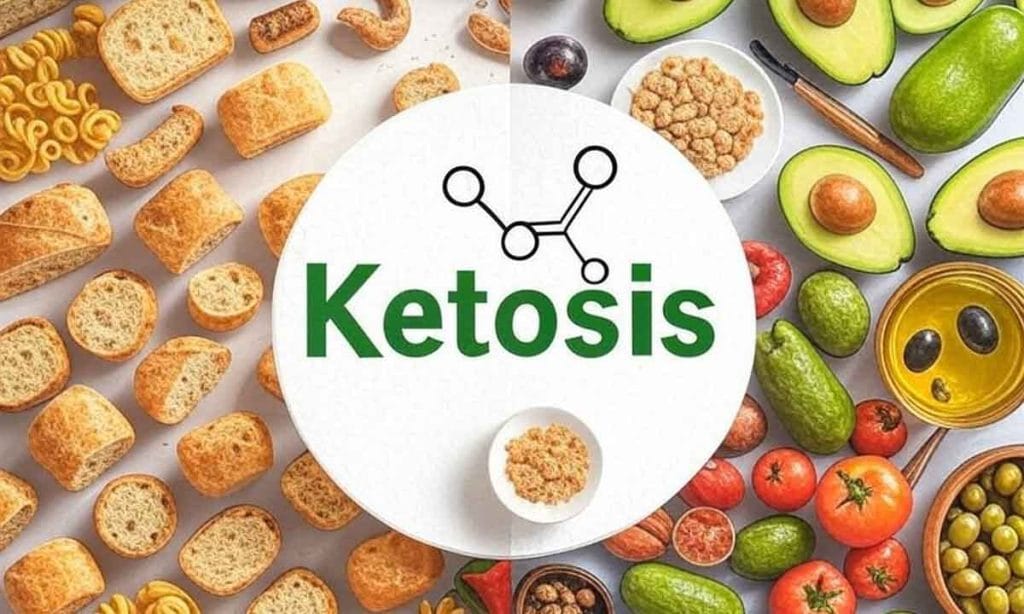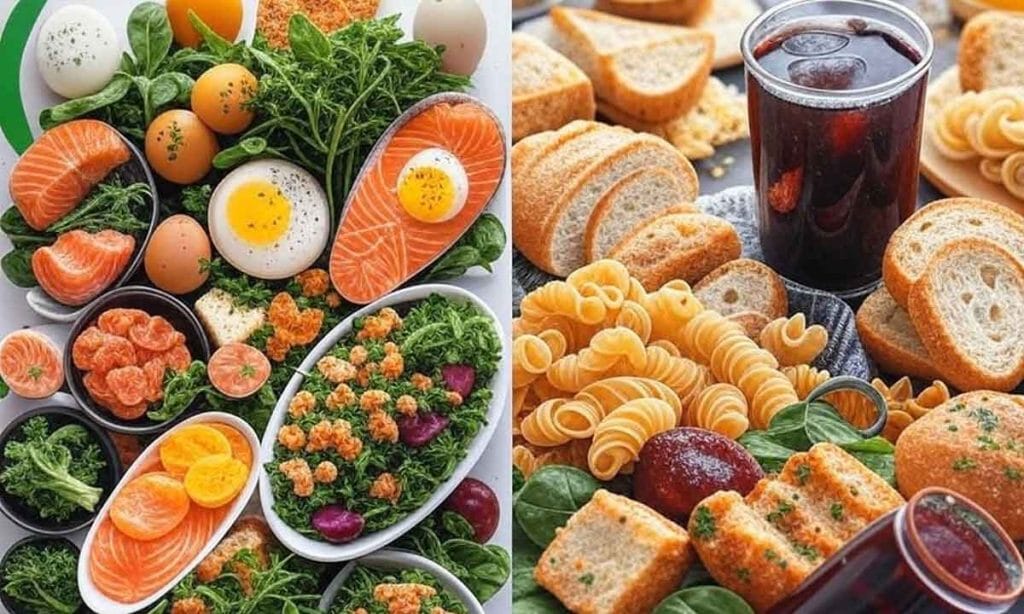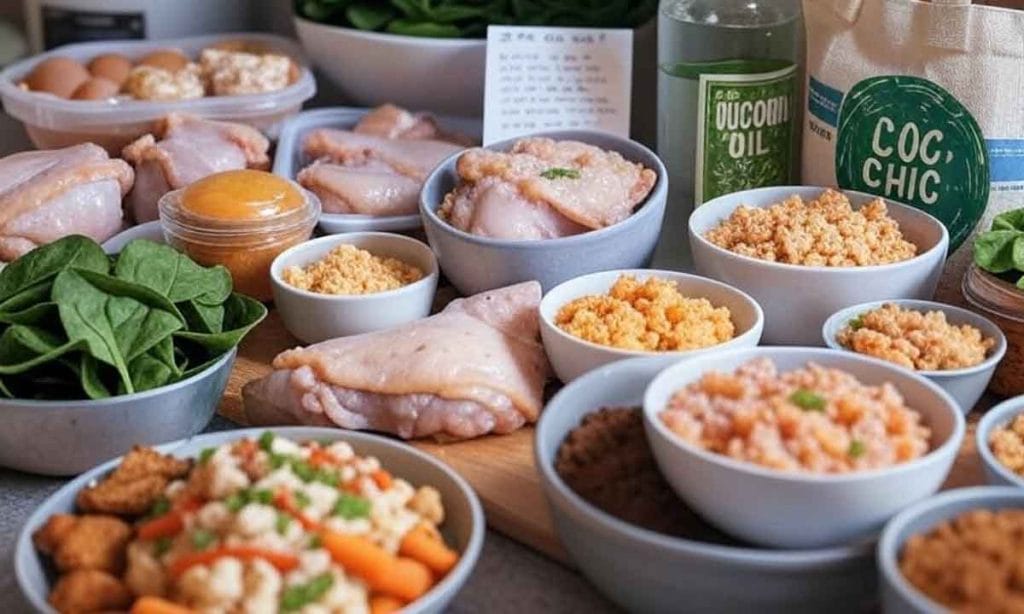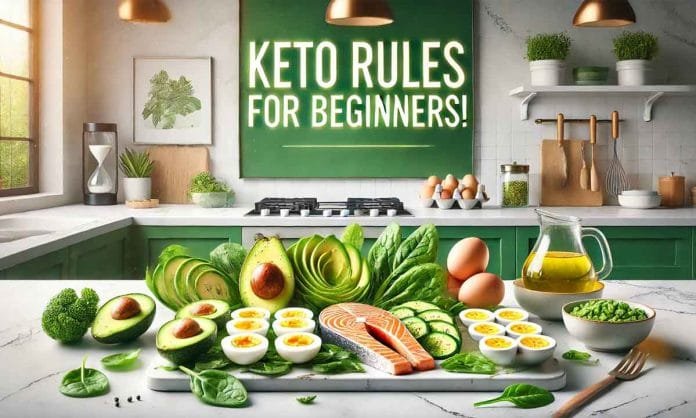- Why So Many People Are Going Keto
- What Is the Keto Diet, in Simple Terms?
- Why Follow Keto Diet Rules?
- The 5 Golden Rules of the Keto Diet
- What a Keto Plate Looks Like
- What to Eat vs. What to Avoid on Keto
- How to Tell You’re in Ketosis
- Real-World Keto Tips
- Common Mistakes (And How to Avoid Them)
- Is Keto Right for You?
- Real Keto Success Stories
- Frequently Asked Questions (FAQ) about Keto Diet Rules
- What are the basic rules of the keto diet?
- How long does it take to get into ketosis?
- What foods should I avoid on the keto diet?
- Can I eat fruit on keto?
- Is keto safe for everyone?
- What happens if I eat too many carbs on keto?
- Do I need to count calories on the keto diet?
- How much protein should I eat on keto?
- Can I drink alcohol on keto?
- What are the signs I’m in ketosis?
- Conclusion: Start Strong, Stay Smart
- Sources
Why So Many People Are Going Keto

If you’ve been considering trying the keto diet rules, you’re in good company. The high-carb, high-fat diet has become a popular choice for millions of people seeking to lose weight, stabilize their blood sugar levels, or improve their overall well-being.
But here’s the thing: keto only works if you do it right.
This guide will walk you through the essential rules of the keto diet, helping you avoid common mistakes, stay healthy, and achieve results. Whether you’re a total beginner or simply looking to refine your plan, this is your go-to resource.

What Is the Keto Diet, in Simple Terms?
The keto diet (short for “ketogenic”) flips the usual nutrition model on its head. Instead of relying on carbs, your body begins to use fat for fuel. This process is called ketosis.
When you reduce your carb intake, your body produces molecules called ketones, which power your brain and body. The result? More energy, fewer cravings, and often significant fat loss.

Why Follow Keto Diet Rules?
Because without a roadmap, you might feel tired, gain weight, or give up altogether. But with the proper guidance, keto can help you:
- ✅ Lose weight without constant hunger
- ✅ Stabilise blood sugar and reduce insulin resistance
- ✅ Improve mental clarity and focus
- ✅ Support heart health when you choose the right fats

The 5 Golden Rules of the Keto Diet
Let’s make this easy. Here are the top rules you need to follow to do keto the right way:
🥦 1. Keep Carbs Very Low (20–50g per day)
Carbs are the first thing to go on keto. Your goal is to stay within a range of 20 to 50 grams of net carbs per day. That means:
- Say goodbye to bread, pasta, rice, and sugar
- Eat mostly leafy greens, broccoli, cauliflower, and small amounts of berries
- Net carbs = total carbs minus fibre
This rule is non-negotiable if you want to get into (and stay in) ketosis.
🥑 2. Embrace Healthy Fats
Since you’re cutting carbs, you’ll need another source of energy—fat.
Focus on hearty treats like:
- Avocadyos
- Olive oil
- Coconut oil
- Grass-fed butter
- Nuts and seeds
- Fatty fish (like salmon or sardines)
Avoid trans fats and processed junk food. Keto isn’t a free pass to eat bacon all day.
🍗 3. Keep Protein Moderate
Keto isn’t a high-protein diet. Too much protein can knock you out of ketosis by turning into glucose in the body.
Aim for moderate amounts:
- Chicken, beef, pork
- Eggs and seafood
- Tofu or tempeh if you’re plant-based
The general guideline is 0.6 to 1 gram of protein per pound of body mass.
💧 4. Stay Hydrated & Replenish Electrolytes
Keto causes you to flush water and electrolytes, especially in the first week. If you don’t stay hydrated, you could get the dreaded keto flu.
Combat it by:
- Drinkdon’tore water
- Adding sea salt to your food
- Eating potassium-rich foods (like spinach or avocado)
- Considering a keto-friendly electrolyte supplement
🥬 5. Prioritize Nutrients and Fiber
Cutting carbs doesn’t mean you should skimp on veggies. You still need vitamins and minerals to maintain good health.
Eat plenty of:
- Leafy greens (spinach, kale, arugula)
- Cruciferous vegetables (broccoli, cauliflower)
- Seeds like chia and flax
- A daily multivitamin, if needed

What a Keto Plate Looks Like
Here’s a simple formula:
| Nutrient | % of Daily Calories | Focus On |
|---|---|---|
| Fat | 70–80% | Avocados, olive oil, cheese |
| Protein | 15–25% | Eggs, fish, poultry |
| Carbs | 5–10% | Leafy greens, berries (sparingly) |

What to Eat vs. What to Avoid on Keto
✅ Eat More Of:
- Eggs, cheese, and full-fat yoghurt
- Meat, poultry, and seafood
- Healthy oils (olive, avocado)
- Non-starchy vegetables
- Small portions of berries
🚫 Avoid:
- Bread, rice, pasta
- Sweets and sugary drinks
- Beans and most fruits
- Processed snack foods

How to Tell You’re in Ketosis
You might notice:
- Reduced appetite
- A clear head and steady. Youreyy
- A slightly fruity smell on your breath
- Weight loss, especially water weight, hits at first
Or use tools like:
- Urine test strips (affordable, but less accurate)
- Blood ketone meters (more accurate)
- Breath analyzers

Real-World Keto Tips
🍽 Easy Meal Ideas
- Scrambled eggs with spinach and cheese
- Grilled chicken with zucchini noodles
- Salmon with avocado and a side salad
🛒 Grocery List Staples
- Eggs, cheese, butter
- Leafy greens and cruciferous veggies
- Chicken thighs, ground beef, and fish
- Almonds, chia seeds, and coconut oil
😋 Quick Keto Snacks
- Boiled eggs
- Celery with almond butter
- Cheese sticks
- Olives
- A few nuts (watch the carbs)

Common Mistakes (And How to Avoid Them)
- ❌ Too much protein – keeps you out of ketosis
- ❌ Not enough fat – leaves you tired and hungry
- ❌ Skipping electrolytes leads to headaches and cramps
- ❌ Eating hidden carbs – always read food labels
- ❌ Quitting too early – your body needs time to adapt

Is Keto Right for You?
Keto works for many people, but it’s not a one-size-fits-all approach.
Talk to your doctor if you have:
- Type 1 diabetes
- Kitsney or liver issues
- A history of eating disorders
- You’re pregnant or nursing

Real Keto Success Stories
🧍♂️ John, 58: Lost 35 pounds and reversed type 2 diabetes in 4 months.
👩 Mia, 42: Improved focus, dropped two dress sizes, and reduced joint pain.
👨 David, 34: Finally kicked brain fog and now sleeps like a baby.
Frequently Asked Questions (FAQ) about Keto Diet Rules
What are the basic rules of the keto diet?
The keto diet focuses on high fat, moderate protein, and very low carbohydrates. Key rules include keeping net carbs between 20–50 grams per day, consuming a sufficient amount of healthy fats, staying hydrated, and avoiding sugar and processed foods.
How long does it take to get into ketosis?
Most people enter ketosis within 2 to 7 days of following the keto rules strictly. Factors such as activity level, metabolism, and carbohydrate intake can affect how quickly your body starts producing ketones.
What foods should I avoid on the keto diet?
Avoid high-carb foods, such as bread, pasta, rice, potatoes, sugary snacks, soda, and most fruits. Processed foods and trans fats should also be eliminated for best results.
Can I eat fruit on keto?
Most fruits are too high in sugar for a keto diet. However, small portions of low-carb fruits, such as berries (e.g., strawberries, raspberries), are allowed in moderation.
Is keto safe for everyone?
Keto is generally safe for healthy individuals. However, people with diabetes (especially Type 1), kidney disease, liver issues, or who are pregnant should consult a healthcare provider before starting keto.
What happens if I eat too many carbs on keto?
Eating too many carbs can kick you out of ketosis, leading to blood sugar spikes, cravings, and stalled weight loss. If this happens, reduce your carb intake and follow the keto guidelines to get back on track.
Do I need to count calories on the keto diet?
Not always. Many people naturally eat fewer calories on keto due to reduced hunger. However, if you’re not losing weight, tracking calories and macros may help identify issues.
How much protein should I eat on keto?
Protein should be moderate—about 15–25% of your daily calories. Overeating can lead to gluconeogenesis, the conversion of protein into glucose, which may slow down ketosis.
Can I drink alcohol on keto?
Yes, but choose wisely. Stick to low-carb options, such as dry wine, whiskey, vodka, or tequila. Avoid sugary mixers and beer. Remember, alcohol can slow fat burning.
What are the signs I’m in ketosis?
Common signs include reduced appetite, increased energy, improved mental clarity, short-term weight loss, and occasionally a fruity breath odor. Testing with urine strips or a blood ketone meter can confirm it.
Conclusion: Start Strong, Stay Smart
Following these keto diet rules gives you the best shot at long-term success. You’ll feel better, move better, and (bonus) your jeans might even fit better.
👉 Ready to start?
- Grab our free keto meal plan.
- Check with your healthcare provider.
- Sign up for weekly recipes and keto tips!
Sources
- Mayo Clinic: Keto diet limits carbohydrates to ≤50 g/day Mayo Clinic Health System
- Mayo Clinic Diet: How to make keto healthy Mayo Clinic Diet
- UC Davis Nutrition: Keto macronutrient ratios nutrition.ucdavis.edu
- UConn CE: Keto-flu and long-term risks pharmacy.media.uconn.edu
- PMC: KD and cardiovascular disease prevention PMC
- PMC: Keto effects on CVD risk factors PMC
- PMC: Clinical benefits in diabetes and weight loss PMC
- StatPearls: KD side effects and contraindications ncbi.nlm.nih.gov
- NIH PubMed: Ketone mechanisms PMC
- CDC FastStats: Average U.S. carb intake cdc.gov
- Cleveland Clinic: Keto diet basics Cleveland Clinic
- Verywell Health: Ketosis overview Verywell Health
- Health.com: Keto macros variations Health
- UChicago Medicine: Achieving ketosis metrics uchicagomedicine.org


